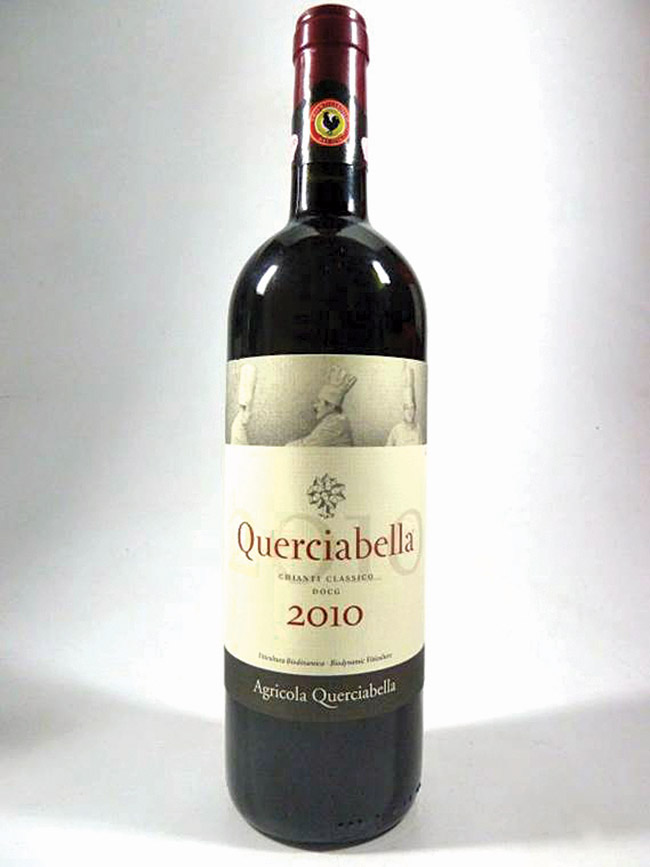Chianti: Tasting Tuscany In A Glass
For those fortunate enough to have been to Tuscany and Florence, the word Chianti can bring back great memories.
Tuscany’s countryside is like no other. Almost everywhere you look seems like a postcard picture. The rolling hills capped with castles and villas, the ancient olive groves and, of course, the beautiful vineyards all lend themselves to the picturesque scenes.
This is Chianti country. But few people know that there are quite a few different types of Chianti. There are two different DOCGs in this area. Chianti is the more expansive of the two, with Chianti Classico sitting right at the traditional heart of the Chianti zone. For most traditionalists, Chianti Classico is the original appellation, and indeed it was. Before the DOCG laws came into being, this was the main area of production.
This is not to say that the Classico zone is better than the outlying regions of Chianti. There are many very conscientious growers and winemakers outside the Classico zone. There also are some very good terroirs outside the Classico zone as well. But most winemakers believe that the Classico zone is generally more highly respected because of its history and the quality of its wine. Add to these two DOCGs the opportunity for each of them to be Riserva with additional aging, above and beyond their normale counterparts, typically 24 months as well as a half-percent higher minimum alcohol level. You can see that there is plenty of diversity when it comes to Chianti and Chianti Classico.
The main grape here is the noble Sangiovese. Sangiovese is one of Italy’s finest grape varieties, and along with Nebbiolo is perhaps its finest champions for red wine in the world. Sangiovese is prone to mutation and has many synonyms: Prugnolo Gentile and Brunello are its most common. In Chianti, it can be blended with up to 30 percent other varieties (including some whites). In Chianti Classico, it can be blended with up to 20 percent of other red varieties (no white here).
But Sangiovese in the Chianti and Chianti Classico areas have a unique character apart from Montepulciano and Montalcino. Here Sangiovese is spicy: herbaceous and tea-like. It reminds me of a forest floor in the fall, and it even can hint toward tobacco and cinnamon. Fruit essences of strawberry, cranberry and currants are common, with darker blackberries and plum coming to the fore if the conditions and winemaking express it. Sangiovese always has tannin and acidity. It has a grip both on the gums and in the far reaches of your salivary glands.
Many people call it a “food wine.” I think that is code for “it needs food.” But, to me, Chianti above all else is associated with food. There is a difference. I don’t think that outside of Italy many drinkers sip Chianti like a cocktail. It is not like Merlot or Pinot Noir. When we drink Chianti, it is always with a meal, and it makes sense as that is exactly where Chianti and Chianti Classico shine. These wines typically have plenty of structure to go with game and foul as well as lamb and even a good rib eye – anyone ever heard of Bistecca alla Fiorentina? A tomato-based sauce with pasta is as easy as pie with Sangiovese, and I go as far as pizza as well. What I love about it is that the fruit never overpowers any of the other flavors. And, as you take a bite of food and wash it down, the tannins fade and the acidity refreshes.
Two of my favorites both come from the Chianti Classico zone. The 2009 Marchese Antinori Chianti Classico Riserva ($35) is lovely. The Antinori name is synonymous with quality, and I consider it the first family of wine in Italy. This wine is 90 percent Sangiovese and 10 percent Cabernet Sauvignon. Oh, and by the way, it comes from the Tignanello Estate – yes, that Tignanello, which retails for almost $100. The wine is heady with more floral tones than almost any other Chianti Classico Riserva in my recent memory. It has plenty of tannin, and is quite seamless on the palate with lots of currants and cranberry fruit notes, along with anise and cardamom tea on the regal finish. The other is the 2010 Querciabella Chianti Classico ($32). This estate is certified organic and biodynamic. What is so special about their Chianti Classico is that, for them, this is their most important wine, so they always make sure that it gets the best fruit from the estate and that is a pleasure for those of us who get to drink it. It is more polished than others, with more plum and black cherry flavors. The tannins here are some of the smoothest of any Chianti Classico to cross my lips. And did I mention it is 100 percent Sangiovese?
Whether you prefer Chianti to Chianti Classico is simply a matter of taste. But just know that when you go for a bottle of Chianti there is plenty to choose from. I hope you find that bottle that embodies the beauty and place that represents Tuscany.
Roberto Viernes is a master sommelier.
rviernes@southernwine.com
Twitter:@Pinotpusher







